Planning worship?
Check out our sister site, ZeteoSearch.org,
for 20+ additional resources related to your search.
- |
User Links
Person Results
‹ Return to hymnal
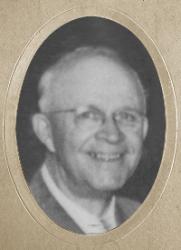
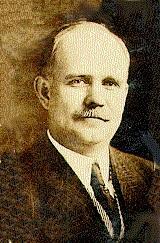



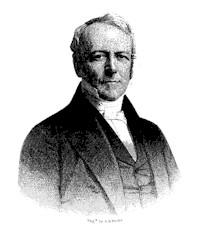


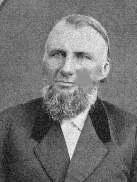
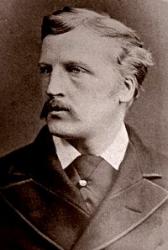




Export as CSV
A. H. Ackley

1887 - 1960 Person Name: A. H. A. Hymnal Number: 166 Author of "He Lives" in Songs Of The Church Alfred Henry Ackley was born 21 January 1887 in Spring Hill, Pennsylvania. He was the youngest son of Stanley Frank Ackley and the younger brother of B. D. Ackley. His father taught him music and he also studied at the Royal Academy of Music in London. He graduated from Westminster Theological Seminary in Maryland and was ordained as a Presbyterian minister in 1914. He served churches in Pennsylvania and California. He also worked with the Billy Sunday and Homer Rodeheaver evangelist team and for Homer Rodeheaver's publishing company. He wrote around 1500 hymns. He died 3 July 1960 in Los Angeles.
Dianne Shapiro (from ackleygenealogy.com by Ed Ackley and Allen C. Ackley)
A. H. Ackley
B. D. Ackley

1872 - 1958 Hymnal Number: 352 Composer of "I WALK WITH THE KING" in Songs Of The Church Bentley DeForrest Ackley was born 27 September 1872 in Spring Hill, Pennsylvania. He was the oldest son of Stanley Frank Ackley and the brother of A. H. Ackley. In his early years, he traveled with his father and his father's band. He learned to play several musical instruments. By the age of 16, after the family had moved to New York, he began to play the organ for churches. He married Bessie Hill Morley on 20 December 1893. In 1907 he joined the Billy Sunday and Homer Rodeheaver evangelist team as secretary/pianist. He worked for and traveled with the Billy Sunday organization for 8 years. He also worked as an editor for the Homer Rodeheaver publishing company. He composed more than 3000 tunes. He died 3 September 1958 in Winona Hills, Indiana at the age of 85 and is buried in Oakwood Cemetery, Warsaw, Indiana, near his friend Homer Rodeheaver.
Dianne Shapiro (from ackleyfamilygenealogy.com by Ed Ackley and Allen C. Ackley)
B. D. Ackley
J. W. Acuff
1864 - 1937 Person Name: James W. Acuff Hymnal Number: 303 Author of "Just Over in the Glory Land" in Songs Of The Church Born: January 4, 1864, Freestone County, Texas.
Died: August 1, 1937, Georgetown, Texas.
Buried: Odd Fellows Cemetery, Georgetown, Texas.
James was a well known singer and song writer among the Churches of Christ in Texas. He wrote several popular Gospel songs, often led the singing for protracted meetings, and helped compile hymnals for the Firm Foundation Company of Austin. His career as a singer and song writer spanned nearly 50 years.
http://www.hymntime.com/tch/bio/a/c/u/acuff_jw.htm
J. W. Acuff
Sarah Flower Adams

1805 - 1848 Person Name: Sarah F. Adams Hymnal Number: 364 Author of "Nearer, My God, to Thee" in Songs Of The Church Adams, Sarah, nee Flower. born at Harlow, Essex, Feb. 22nd, 1805; died in London, Aug. 14, 1848, and was buried at Harlow, Aug. 21,1848. She was the younger daughter of Mr. Benjamin Flower, editor and proprietor, of The Cambridge Intelligencer; and was married, in 1834, to William B. Adams, a civil engineer. In 1841 she published Vivia Perpetua, a dramatic poem dealing with the conflict of heathenism and Christianity, in which Vivia Perpetua suffered martyrdom; and in 1845, The Flock at the Fountain; a catechism and hymns for children. As a member of the congregation of the Rev. W. J. Fox, an Unitarian minister in London, she contributed 13 hymns to the Hymns and Anthems, published by C. Fox, Lond., in 1841, for use in his chapel. Of these hymns the most widely known are— "Nearer,my God,to Thee," and "He sendeth sun, He sendeth shower." The remaining eleven, most of which have come into common use, more especially in America, are:—
Creator Spirit! Thou the first. Holy Spirit.
Darkness shrouded Calvary. Good Friday.
Gently fall the dews of eve. Evening.
Go, and watch the Autumn leaves. Autumn.
O hallowed memories of the past. Memories.
O human heart! thou hast a song. Praise.
O I would sing a song of praise. Praise.
O Love! thou makest all things even. Love.
Part in Peace! is day before us? Close of Service.
Sing to the Lord! for His mercies are sure. Praise.
The mourners came at break of day. Easter.
Mrs. Adams also contributed to Novello's musical edition of Songs for the Months, n. d. Nearly all of the above hymns are found in the Unitarian collections of Great Britain, and America. In Martineau's Hymns of Praise & Prayer, 1873, No. 389, there is a rendering by her from Fenelon: —" Living or dying, Lord, I would be Thine." It appeared in the Hymns and Anthems, 1841.
-John Julian, Dictionary of Hymnology (1907)
Sarah Flower Adams
Joseph Addison

1672 - 1719 Hymnal Number: 539 Author of "The Spacious Firmament on High" in Songs Of The Church Addison, Joseph, born at Milston, near Amesbury, Wiltshire, May 1, 1672, was the son of the Rev. Lancelot Addison, sometime Dean of Lichfield, and author of Devotional Poems, &c, 1699. Addison was educated at the Charterhouse, and at Magdalen College, Oxford, graduating B.A. 1691 and M.A. 1693. Although intended for the Church, he gave himself to the study of law and politics, and soon attained, through powerful influence, to some important posts. He was successively a Commissioner of Appeals, an Under Secretary of State, Secretary to the Lord Lieutenant of Ireland, and Chief Secretary for Ireland. He married, in 1716, the Dowager Countess of Warwick, and died at Holland House, Kensington, June 17, 1719. Addison is most widely known through his contributions to The Spectator, The Toiler, The Guardian, and The Freeholder. To the first of these he contributed his hymns. His Cato, a tragedy, is well known and highly esteemed. Addison's claims to the authorship of the hymns usually ascribed to him, or to certain of them, have been called in question on two occasions. The first was the publication, by Captain Thompson, of certain of those hymns in his edition of the Works of Andrew Marvell, 1776, as the undoubted compositions of Marvell; and the second, a claim in the Athenaeum, July 10th, 1880, on behalf of the Rev. Richard Richmond. Fully to elucidate the subject it will be necessary, therefore, to give a chronological history of the hymns as they appeared in the Spectator from time to time.
i. The History of the Hymns in The Spectator. This, as furnished in successive numbers of the Spectator is :—
1. The first of these hymns appeared in the Spectator of Saturday, July 26, 1712, No. 441, in 4 stanzas of 6 lines. The article in which it appeared was on Divine Providence, signed “C." The hymn itself, "The Lord my pasture shall prepare," was introduced with these words:—
"David has very beautifully represented this steady reliance on God Almighty in his twenty-third psalm, which is a kind of pastoral hymn, and filled with those allusions which are usual in that kind of writing As the poetry is very exquisite, I shall present my readers with the following translation of it." (Orig. Broadsheet, Brit. Mus.)
2. The second hymn appeared in the Spectator on Saturday, Aug. 9, 1712, No. 453, in 13 st. of 4 1., and forms the conclusion of an essay on " Gratitude." It is also signed " C," and is thus introduced:—
“I have already obliged the public with some pieces of divine poetry which have fallen into my hands, and as they have met with the reception which they deserve, I shall, from time to time, communicate any work of the same nature which has not appeared in print, and may be acceptable to my readers." (Orig. Broadsheet, British Museum)
Then follows the hymn:—"When all Thy mercies, 0 my God."
3. The number of the Spectator for Tuesday, Aug. 19, 1712, No. 461, is composed of three parts. The first is an introductory paragraph by Addison, the second, an unsigned letter from Isaac Watts, together with a rendering by him of Ps. 114th; and the third, a letter from Steele. It is with the first two we have to deal. The opening paragraph by Addison is:—
“For want of time to substitute something else in the Boom of them, I am at present obliged to publish Compliments above my Desert in the following Letters. It is no small Satisfaction, to have given Occasion to ingenious Men to employ their Thoughts upon sacred Subjects from the Approbation of such Pieces of Poetry as they have seen in my Saturday's papers. I shall never publish Verse on that Day but what is written by the same Hand; yet shall I not accompany those Writings with Eulogiums, but leave them to speak for themselves." (Orig. Broadsheet, British Museum
Joseph Addison
Cecil Frances Alexander

1818 - 1895 Person Name: Cecil F. Alexander Hymnal Number: 275 Author of "Jesus Calls Us" in Songs Of The Church As a small girl, Cecil Frances Humphries (b. Redcross, County Wicklow, Ireland, 1818; Londonderry, Ireland, 1895) wrote poetry in her school's journal. In 1850 she married Rev. William Alexander, who later became the Anglican primate (chief bishop) of Ireland. She showed her concern for disadvantaged people by traveling many miles each day to visit the sick and the poor, providing food, warm clothes, and medical supplies. She and her sister also founded a school for the deaf. Alexander was strongly influenced by the Oxford Movement and by John Keble's Christian Year. Her first book of poetry, Verses for Seasons, was a "Christian Year" for children. She wrote hymns based on the Apostles' Creed, baptism, the Lord's Supper, the Ten Commandments, and prayer, writing in simple language for children. Her more than four hundred hymn texts were published in Verses from the Holy Scripture (1846), Hymns for Little Children (1848), and Hymns Descriptive and Devotional ( 1858).
Bert Polman
==================
Alexander, Cecil Frances, née Humphreys, second daughter of the late Major John Humphreys, Miltown House, co. Tyrone, Ireland, b. 1823, and married in 1850 to the Rt. Rev. W. Alexander, D.D., Bishop of Derry and Raphoe. Mrs. Alexander's hymns and poems number nearly 400. They are mostly for children, and were published in her Verses for Holy Seasons, with Preface by Dr. Hook, 1846; Poems on Subjects in the Old Testament, pt. i. 1854, pt. ii. 1857; Narrative Hymns for Village Schools, 1853; Hymns for Little Children, 1848; Hymns Descriptive and Devotional, 1858; The Legend of the Golden Prayers 1859; Moral Songs, N.B.; The Lord of the Forest and his Vassals, an Allegory, &c.; or contributed to the Lyra Anglicana, the S.P.C.K. Psalms and Hymns, Hymns Ancient & Modern, and other collections. Some of the narrative hymns are rather heavy, and not a few of the descriptive are dull, but a large number remain which have won their way to the hearts of the young, and found a home there. Such hymns as "In Nazareth in olden time," "All things bright and beautiful," "Once in Royal David's city," "There is a green hill far away," "Jesus calls us o'er the tumult," "The roseate hues of early dawn," and others that might be named, are deservedly popular and are in most extensive use. Mrs. Alexander has also written hymns of a more elaborate character; but it is as a writer for children that she has excelled.
- John Julian, Dictionary of Hymnology (1907)
===============
Alexander, Cecil F., née Humphreys, p. 38, ii. Additional hymns to those already noted in this Dictionary are in common use:—
1. Christ has ascended up again. (1853.) Ascension.
2. His are the thousand sparkling rills. (1875.) Seven Words on the Cross (Fifth Word).
3. How good is the Almighty God. (1S48.) God, the Father.
4. In [a] the rich man's garden. (1853.) Easter Eve.
5. It was early in the morning. (1853.) Easter Day.
6. So be it, Lord; the prayers are prayed. (1848.) Trust in God.
7. Saw you never in the twilight? (1853.) Epiphany.
8. Still bright and blue doth Jordan flow. (1853.) Baptism of Our Lord.
9. The angels stand around Thy throne. (1848.) Submission to the Will of God.
10. The saints of God are holy men. (1848.) Communion of Saints.
11. There is one Way and only one. (1875.) SS. Philip and James.
12. Up in heaven, up in heaven. (1848.) Ascension.
13. We are little Christian children. (1848.) Holy Trinity.
14. We were washed in holy water. (1848.) Holy Baptism.
15. When of old the Jewish mothers. (1853.) Christ's Invitation to Children.
16. Within the Churchyard side by side. (1848.) Burial.
Of the above hymns those dated 1848 are from Mrs. Alexander's Hymns for Little Children; those dated 1853, from Narrative Hymns, and those dated 1875 from the 1875 edition of Hymns Ancient & Modern.
Several new hymns by Mrs. Alexander are included in the 1891 Draft Appendix to the Irish Church Hymnal.
--John Julian, Dictionary of Hymnology, Appendix, Part II (1907)
=============
Alexander, Cecil F. , p. 38, ii. Mrs. Alexander died at Londonderry, Oct. 12, 1895. A number of her later hymns are in her Poems, 1896, which were edited by Archbishop Alexander.
--John Julian, Dictionary of Hymnology, New Supplement (1907)
See also in:Hymn Writers of the Church
Cecil Frances Alexander
James W. Alexander

1804 - 1859 Person Name: J. W. Alexander Hymnal Number: 398 Translator of "O Sacred Head" in Songs Of The Church James W. Alexander (b. Hopewell, Louisa County, VA, 1804; d. Sweetsprings, VA, 1859) was often overshadowed by his father, the renowned Archibald Alexander, first professor at Princeton Theological Seminary. But James Alexander was also a fine preacher, teacher, and writer. He studied at New Jersey College (now Princeton University) and Princeton Seminary. Ordained in the Presbyterian Church, he alternated his career between teaching and pastoring; for two years (1849-1851) he was professor of ecclesiastical history and church government at Princeton Seminary. Alexander translated a number of hymns from Greek, Latin, and German but is mainly known today for his translation of "O Sacred Head."
Bert Polman
=====================
Alexander, James Waddell, D.D., son of Archibald Alexander, D.D., b. at Hopewell, Louisa, county of Virginia, 13 Mar., 1804, graduated at Princeton, 1820, and was successively Professor of Rhetoric at Princeton, 1833; Pastor of Duane Street Presbyterian Church, New York, 1844; Professor of Church History, Princeton, 1849; and Pastor of 5th Avenue Presbyterian Church, New York, 1851; d. at Sweetsprings, Virginia, July 31, 1859. His works include Gift to the Afflicted, Thoughts on Family Worship, and others. His Letters were published by the Rev. Dr. Hall, in 2 vols., some time after his death, and his translations were collected and published at New York in 1861, under the title, The Breaking Crucible and other Translations. Of these translations the following are in use:
O Sacred Head, now wounded” a translation of "Salve Caput," through the German; "Near the cross was Mary weeping," a translation of "Stabat Mater"; and "Jesus, how sweet Thy memory is," a translation of "dulcis memoria." The annotations of these translations are given under their respective Latin first lines.
--John Julian, Dictionary of Hymnology (1907)
James W. Alexander
Chester G. Allen
1838 - 1878 Hymnal Number: 426 Composer of "[Praise Him! praise Him! Jesus, our blessed Redeemer!]" in Songs Of The Church Chester G. Allen was known as a teacher, composer and musical writer. He taught music in Cleveland, Ohio public schools. He also edited and compiled collections of music for schools and churches, containing many of his own compositions.
Nancy Naber
Chester G. Allen
George Nelson Allen

1812 - 1877 Person Name: Geo. N. Allen Hymnal Number: 358 Composer of "[Must Jesus bear the cross alone]" in Songs Of The Church George Nelson Allen (1812-1871), studied at Western Reserve Academy in Hudson, Oh OH and with Lowell Mason in Boston. Allen gave a strong musical foundation to Oberlin College in its earliest years; in addition to being Professor of Music he also served as Professor of Geology and Natural History, Secretary and Treasurer. In 1835 he compiled The Oberlin Social and Sabbath Hymn Book, in which appeared his most well known tune MAITLAND (also known as CROSS AND CROWN or WESTERN MELODY) with the text "Must Jesus bear the cross alone?". This was adapted by Thomas A. Dorsey in 1938 for his hymn "Precious Lord, take my hand". hand." He composed anthems and wrote some additional music for Isaac Woodbury's Oratorio "Absalom." He compiled a small 3" x 4" hymnal that every student should keep in his pocket that went through several printings.
Mary Louise VanDyke
George Nelson Allen
N. W. Allphin

1875 - 1972 Hymnal Number: 49 Composer of "[To us a Child of Hope is born]" in Songs Of The Church Newton Washington Allphin wrote religious music, piano solos, and band marches. He was a member of the Church of Christ. He compiled and published twelve song books.
- Monty Lynn from Our Garden of Song, edited by Gene C. Finley (West Monroe, LA: Howard, 1980).
N. W. Allphin
J. K. Alwood

1828 - 1909 Person Name: J. K. A. Hymnal Number: 402 Author of "O They Tell Me of a Home" in Songs Of The Church Alwood, Josiah Kelley. (Harrison County, Ohio, July 15, 1828--January 13, 1909, Morenci, Michigan). Ordained by the United Brethren in Christ, he spent many years as a circuit rider, traveling on horseback to his many appointments. He would be gone from his family for weeks at a time while he held revival meetings and lectured on Christian doctrine. Later, he became a presiding elder in the North Ohio Conference and was a delegate to several general conferences of his church. Always a staunch supporter of the original constitution of his denomination, he was a delegate to the general conference at the time of the separation of the church into two groups at York, Pennsylvania, in 1889.
--William J. Reynolds, DNAH Archives
J. K. Alwood
Anonymous
Hymnal Number: 678 Author of "Just a Closer Walk with Thee" in Songs Of The Church In some hymnals, the editors noted that a hymn's author is unknown to them, and so this artificial "person" entry is used to reflect that fact. Obviously, the hymns attributed to "Author Unknown" "Unknown" or "Anonymous" could have been written by many people over a span of many centuries.
Anonymous
John Douglas Sutherland Campbell, Duke of Argyll

1845 - 1914 Person Name: 9th Duke of Argyll Hymnal Number: 602 Author of "Unto the Hills" in Songs Of The Church John George Henry Douglas Sutherland Campbell LLD [Duke of Argyll] United Kingdom 1845-1914. Born in London to George Campbell, Marques of Lorne, and styled Earl of Campbell from birth, he assumed his father's title at the age of 21 months, when his father became 8th Duke of Argyll. He bore that title until age 54. Educated at Edinburgh, Eton College, St. Andrews and at Trinity College, Cambridge, he also went to the National Art Training School. He traveled widely for 10 years throughout North and Central America, writing literature and poetry. In the UK, from 1868, he represented the constituency of Argyllshire as a Liberal member of Parliament in the House of Commons. He made little impression there. He was appointed Lt. Col. Commandant of the 1st Argyll & Bute Artillary Volunteers. He married Queen Victoria's 4th daughter, Princess Louise. They shared interest for art, but the marriage was childless and unhappy, and they spent much time apart.
At 33, he was appointed Governor General of Canada. He and Louise made many contributions to Canadian society, especially in the arts and sciences. They encouraged establishment of the Royal Society of Canada, the Royal Canadian Academy of Arts, and the National Gallery of Canada, even selecting some of its paintings. Campbell was also involved in completion of the Canadain Pacific Railway and a hospital in British Columbia. He and his wife held lavish parties while in Canada. In 1881, Louise returned to England, and the Lord also in 1883, when he published his memoirs of Canada and Scotland. He was Governor and Constable of Windsor Castle from 1892 to 1914. He died of pneumonia in 1914. He received 4 Knightings and 4 special honors for his accomplishments. Towns, buildings, streets and parks were named for him.
John Perry
John Douglas Sutherland Campbell, Duke of Argyll
Thomas Augustine Arne

1710 - 1778 Person Name: Thomas A. Arne Hymnal Number: 20 Composer of "[Again the Lord of light and life]" in Songs Of The Church Dr. Thomas Augustine Arne was born March 12, 1710, in London; became early celebrated as a composer, and established his reputation by settling Milton's "Comus" to music - light, airy, and original; he composed many songs, and nearly all his attempts were successful; died March 5, 1778, aged 68.
A Dictionary of Musical Information by John W. Moore, Boston: Oliver, Ditson & Company, 1876
Thomas Augustine Arne
Robert E. Arnold
1899 - 1964 Person Name: Robt. E. Arnold Hymnal Number: 330 Author of "Lovest Thou Me More Than These?" in Songs Of The Church Robert Earl Arnold
Robert E. Arnold
Robert S. Arnold
1905 - 2003 Person Name: R. S. A. Hymnal Number: 385 Author of "No Tears in Heaven" in Songs Of The Church
Robert S. Arnold
Emma Louise Ashford

1850 - 1930 Person Name: E. L. Ashford Hymnal Number: 314 Composer of "[To love some one more dearly ev'ry day]" in Songs Of The Church Ashford, Emma Louise (Hindle). (Delaware state, March 27, 1850-- ). Sand and studied with father. Moved to Plymouth, Massachusetts, 1864; to Seymour, Connecticut, 1865; Organist, St. Peters (Episcopal) Church, 1865; married, 1967 to John Ashford; moved to Chicago, ca.1867; alto soloist (under Dudley Buck), St. James (Episcopal) Church, Chicago, 1967-1868; moved to Nashville, Tennessee, ca.1869. Studied pipe organ with Dr. Anderson; composition with Dr. R.H. Peters. 10 years, Mr. & Mrs. Ashford conducted choir work at Presbyterian Church and Jewish Temple in Nashville. Visited and studied in Europe, 1894, 1897, 1904. Publisher, Lorenz.
See: Hall, J. H. (c1914). Biographies of Gospel Song and Hymn Writers. New York: Fleming H. Revell Company.
--Keith C. Clark, DNAH Archives
Emma Louise Ashford
J. B. Atchinson
1840 - 1882 Hymnal Number: 700 Author of "There's a Stranger at the Door" in Songs Of The Church Atchinson, Jonathan Bush, born at Wilson, New York, Feb. 17, 1840, and "licensed as a Methodist Preacher," Sept. 6, 1874. Of his hymns the following are the best known:—
1. Behold the stone is rolled away. [Easter.] This was Mr. Atchinson's first hymn. It appeared in the Sunday School Times, Dec. 1874. It is not in use in Great Britain.
2. Fully persuaded, Lord, I believe. [Faith.] Written in 1874 or 1875, and first published in Gospel Hymns, No. 1. It is given in I. D. Sankey's Sacred Songs & Solos, No. 149, with music by W. F. Sherwin.
3. I have read of a beautiful city. [Heaven.] Written about the same time as the former, and published in Gospel Hymns. It is given in I. D. Sankey's Sacred Songs & Solos, No. 403, with music by O. F. Presbrey.
4. O crown of rejoicing that's waiting for me. [The Reward .] This hymn is also in I. D. Sankey's Sacred Songs & Solos, No. 174, where it is set to music by P. Bliss. [Rev. F. M. Bird, M.A.]
-- John Julian, Dictionary of Hymnology (1907)
J. B. Atchinson
Maltbie D. Babcock

1858 - 1901 Hymnal Number: 580 Author of "This Is My Father's World" in Songs Of The Church Maltbie D. Babcock (b. Syracuse, NY, 1858; d. Naples, Italy, 1901) graduated from Syracuse University, New York, and Auburn Theological Seminary (now associated with Union Theological Seminary in New York) and became a Presbyterian minister. He served the Brown Memorial Presbyterian Church in Baltimore, Maryland, and the Brick Presbyterian Church in New York City. In Baltimore he was especially popular with students from Johns Hopkins University, but he ministered to people from all walks of life. Babcock wrote hymn texts and devotional, poems, some of which were published in The School Hymnal (1899).
Bert Polman
===================
Babcock, Maltbie Davenport, D.D., was born at Syracuse, N.Y., Aug. 3, 1858. Graduating from Syracuse University, he was ordained to the Presbyterian Ministry and was pastor of churches in Lockport, N.Y., Baltimore, and N.Y. City. He died at Naples, Italy, May 18th, 1901. He was richly gifted, and his short career was memorable for the extraordinary influence of his personality and his preaching. Extracts from his sermons and poems were published in 1901 as Thoughts for Every Day Living; and his Biography by Dr. C. E. Robinson in 1904. He contributed to the Presbyterian School Hymnal, 1899, the following hymns:—
1. Gaily the bells are ringing. Faster.
2. O blessed Saviour, Lord of love. Unto Me.
3. Shining Sun, shining sun. Child's Hymn.
The tunes to these hymns were of his own composing. In The Pilgrim Hymnal, 1904, there is:—
4. Rest in the Lord, my soul. Trust and Peace and in the American Methodist Hymnal, 1905:—
5. Be strong: we are not here to play. Activity in God's Service.
Nos. 4 and 5 are from Thoughts for Every Day Living, 1901; but undated. [Rev. L. F. Benson, D.D.]
--John Julian, Dictionary of Hymnology, New Supplement (1907)
Maltbie D. Babcock
Johann Sebastian Bach

1685 - 1750 Person Name: Bach Hymnal Number: 398 Harmonizer of "[O sacred head, now wounded]" in Songs Of The Church Johann Sebastian Bach was born at Eisenach into a musical family and in a town steeped in Reformation history, he received early musical training from his father and older brother, and elementary education in the classical school Luther had earlier attended.
Throughout his life he made extraordinary efforts to learn from other musicians. At 15 he walked to Lüneburg to work as a chorister and study at the convent school of St. Michael. From there he walked 30 miles to Hamburg to hear Johann Reinken, and 60 miles to Celle to become familiar with French composition and performance traditions. Once he obtained a month's leave from his job to hear Buxtehude, but stayed nearly four months. He arranged compositions from Vivaldi and other Italian masters. His own compositions spanned almost every musical form then known (Opera was the notable exception).
In his own time, Bach was highly regarded as organist and teacher, his compositions being circulated as models of contrapuntal technique. Four of his children achieved careers as composers; Haydn, Mozart, Beethoven, Mendelssohn, Schumann, Brahms, and Chopin are only a few of the best known of the musicians that confessed a major debt to Bach's work in their own musical development. Mendelssohn began re-introducing Bach's music into the concert repertoire, where it has come to attract admiration and even veneration for its own sake.
After 20 years of successful work in several posts, Bach became cantor of the Thomas-schule in Leipzig, and remained there for the remaining 27 years of his life, concentrating on church music for the Lutheran service: over 200 cantatas, four passion settings, a Mass, and hundreds of chorale settings, harmonizations, preludes, and arrangements. He edited the tunes for Schemelli's Musicalisches Gesangbuch, contributing 16 original tunes. His choral harmonizations remain a staple for studies of composition and harmony. Additional melodies from his works have been adapted as hymn tunes.
--John Julian, Dictionary of Hymnology (1907)
Johann Sebastian Bach


 My Starred Hymns
My Starred Hymns


